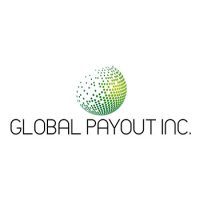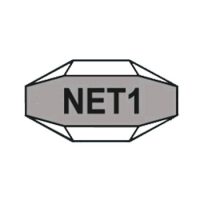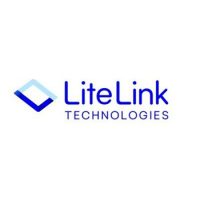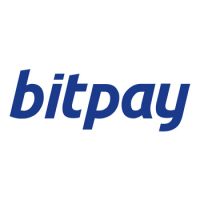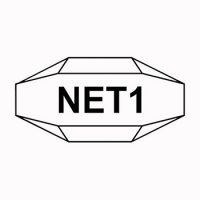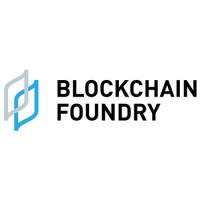Blockchain
Web 3.0 Market to Hit $49.10 Billion by 2030: Cognitive Market Research

The Global Web 3.0 Market size is valued at USD 3.34 Billion in 2022 and is projected to be USD 49.10 Billion by 2030, growing at a CAGR of 46.7% from 2023 to 2030, as per a recent report published by Cognitive Market Research. Web 3.0 infrastructure enhances the user experience by providing highly interactive advertising opportunities. Hence, companies are investing and raising funds to accelerate their Web 3.0 platform. For instance, Livepeer has raised $20 Million for a Series B extension, which will accelerate the growth of Livepeer’s Web3 infrastructure.
Major findings during the study of the Web 3.0 Market:
- The Web 3.0 blockchain market is primarily driven by the benefits of decentralized systems to provide greater security, transparency, and privacy for users compared to traditional centralized systems
- The Web 3.0 market is still in its nascent stages, but it is growing rapidly as more developers and entrepreneurs explore the potential of decentralized applications (dApps) and blockchain-based technologies
- The ability of public networks ensures users across the globe to participate in the network without any restrictions. This attributes to the dominance of the public segment in the Web 3.0 blockchain segment. Further, Web 3.0 is widely used as NFT-powered business model, and large groups of investors are pouring their investments into the nascent Web3 ecosystem, further accelerating the growth of the market
- In terms of end-use industries, BFSI held a maximum revenue share of 31.05% in the market. This can be attributed to the rising demand for Web 3.0 technology in high-speed transactions. It further helps in reducing processing costs in banking sectors
- North America dominates the Web 3.0 market with the highest market share in 2022. This is owing to the wide usage of Web 3.0 in numerous applications such as artificial intelligence, blockchain, online payments, and others
- Similarly, AI and machine learning have currently gained traction in U.S. organizations, with many either employing or planning to utilize AI use cases. In addition, investment in the United States has increased in recent years. Thus, by 2022, the North American artificial intelligence (AI) industry will have reached 24.9 billion US dollars, making it a large AI regional market. This increases the rate of Web 3.0 adoption in North America
View Detailed Report Description:
Web 3.0 Market 2022:
|
Global Web 3.0 Market |
2022 |
|
Global Revenue (USD Billion) |
3.34 |
|
CAGR – (2023-2030) |
46.7 % |
|
Public Type Share |
48.4 % |
|
Cryptocurrency Application Share |
29.7 % |
|
BFSI End-use Share |
31.1 % |
|
North America Web 3.0 Market Regional Share |
34.8 % |
What are the Growth, Drivers, and Restraints for the Web 3.0 Market?
Driver:
Increasing demand for data privacy through the decentralized identity
Web 3.0, also known as the decentralized web built on an open blockchain network, is a vision for the future of the internet in which users have greater control over their data and online interactions. With the advancement in technology such as blockchain, it is possible to create decentralized applications (dApps) that operate independently of centralized servers. Moreover, along with greater control and privacy, Web 3.0 also provides Decentralized finance (DeFi). DeFi applications built on blockchain technology could potentially disrupt traditional financial systems by providing greater access and transparency for users. For cryptocurrency users, it offers the ability to invest, borrow, lend, trade, and take crypto assets permission without any hassle.
Restraint:
Lack of awareness about Web 3.0 blockchain:
Despite the potential benefits of Web 3.0 and blockchain technology, many people and organizations are unaware of Web 3.0 blockchain and how it works. This lack of awareness can slow the adoption of blockchain-based solutions, as businesses may be hesitant to invest in technologies that need to be better by their customers. Moreover, the technical complexity of blockchain technology can also make it difficult for people to understand and use. This might hamper the growth of the Web 3.0 blockchain market.
Check the Full Report, including Global, Regional, and Country Level Analysis:
https://www.cognitivemarketresearch.com/web-3.0-market-report
Our free sample report includes:
- 2023 Updated Report Introduction, Overview, and In-depth industry analysis
- Included COVID-19 Impact Analysis
- 250+ Pages Research Report (Inclusion of Updated Research)
- Provide Chapter-wise guidance on the Request
- Updated Report Includes Top Market Players with their Business Strategy, Sales Volume, Revenue Analysis, and SWOT Analysis (Free analysis of one company profile)
- 2023 Updated Regional Analysis with Graphical Representation of Size, Share & Trends
- Includes an Updated List of tables & figures
- Cognitive Market Research Methodology
How COVID-19 Impacted the Web 3.0 Market?
The digitization process is being significantly accelerated by COVID-19, due to which several cryptocurrency businesses has emerged. The pandemic encouraged businesses to use digital platforms more frequently and to invest in digital solutions. Firms that did not employ any digital platform or channel prior to the pandemic inclined towards digital payments. Additionally, there is an increasing concentration of online sales among top businesses even though the percentage of online sales among firms for all sizes grew.
Additionally, during the COVID-19 pandemic, artificial intelligence (AI) has made great strides, particularly in the area of predictive machine learning models for medical treatment. In many areas of COVID-19, such as diagnosis, public health, clinical decision-making, social control, medicines, vaccine development, surveillance, combination with big data, operation of other key clinical services, and care of COVID-19 patients, artificial intelligence has been employed extensively. All of the considerations mentioned above show that Web 3.0 usage is skyrocketing in the aftermath of COVID-19.
Recent Development:
|
Date |
News |
|
January 2022 |
Livepeer has raised $20 Million from its new investor, Alan Howard: Livepeer has raised $20 Million for Series B extension which will accelerate the growth of Livepeer’s Web3 infrastructure. |
Web 3.0 Market Report Scope
- Web 3.0 Market – Type Outlook (Revenue, USD Billion, 2018 – 2030)
- Public
- Private
- Consortium
- Hybrid
- Web 3.0 Market – Application Outlook (Revenue, USD Billion, 2018 – 2030)
- Cryptocurrency
- Conversational AI
- Data & Transaction Storage
- Payments
- Smart Contracts
- Others
- Web 3.0 Market – End-use Outlook (Revenue, USD Billion, 2018 – 2030)
- BFSI
- Retail & E-commerce
- Media & Entertainment
- Pharmaceuticals
- IT & Telecom
- Others
- Web 3.0 Market – Regional Outlook (Revenue, USD Billion, 2018 – 2030)
- North America (U.S., Canada, Mexico)
- Europe (UK, France, Germany, Italy, Russia, Spain, Sweden, Denmark, Luxembourg, Netherlands, Switzerland, Belgium, and Rest of Europe)
- Asia Pacific (China, Japan, Korea, India, Australia, Philippines, Singapore, Malaysia, Thailand, Indonesia, and Rest of APAC)
- Latin America (Brazil, Argentina, Colombia, Peru, Chile, and Rest of LA)
- Middle East & Africa (Saudi Arabia, Turkey, Nigeria, UAE, Egypt, South Africa, GCC Countries, and Rest of MEA)
List of Key Players in the Web 3.0 Market
-
- Filecoin
- Web3 Foundation
- Zel Technologies Limited.
- Livepeer, Inc.
- Brunswick Corporation
- Helium Systems Inc.
- Kusama
- Polygon Technology
- Kadena LLC
- Ocean Protocol Foundation Ltd.
- Others
Related Reports on the Web 3.0 Market:
- Global Machine Learning is projected to hit USD 213.56 Billion by 2030
The global machine learning market is expected to reach USD 213.56 Billion by 2030 growing at a CAGR of 38.7%. Machine learning uses data and algorithms in order to imitate the way that humans learn. It is a branch of AI and computer science that is an important component of the growing field of data science. The rise in the adoption of technology platforms has spurred the market for machine learning. The increasing robotics sector has also accelerated the need for machine learning.
- Global Metaverse is expected to reach USD 512.49 Billion by 2030
The global metaverse market is expected to reach USD 512.49 Billion by 2030 growing at a CAGR of 47.8%. Metaverse refers to a virtual world that is facilitated by the use of VR and AR. Rising awareness associated with gaming and entertainment has enhanced the market for the metaverse. Further, outbreak of the COVID-19 pandemic has accelerated the demand by changing the social behavior of people.
Other Related Reports:
- Global Artificial Intelligence Market to reach $1,489.64 Billion by 2030, growing at an impressive CAGR of 39.0%
- Global BFSI Security Market to hit $114.6 Billion by 2030, growing at an impressive CAGR of 13.6%
- Global Digital Payment Market to reach $196.34 Billion by 2030, growing at an impressive CAGR of 14.7%
- Global Virtual Reality Market to reach $38.24 Billion by 2030, growing at an impressive CAGR of 16.3%
- Global IoT in Logistics Market to reach $99.67 Billion by 2030, growing at an impressive CAGR of 12.4%
Blockchain
EAT & BEYOND ANNOUNCES PROPOSED NAME CHANGE AND UPDATED INVESTMENT POLICY
Blockchain
Blocks & Headlines: Today in Blockchain – May 30, 2025 (Fraser Edwards, Kyiv NFT, Spirit Blockchain Capital, Indian eHealth, Hedera)

Blockchain technology and cryptocurrencies continue to redefine industries—from competitive gaming and cultural heritage preservation to corporate finance, healthcare, and alternative tokens. Today’s briefing highlights five pivotal developments shaping the ecosystem: Fraser Edwards’s vision for trust in eSports; Ukraine’s wartime cultural preservation via NFTs; Spirit Blockchain Capital’s Q1 2025 operational report; India’s push for blockchain-enabled electronic health records (EHRs); and the rise of viral altcoins such as UniLabs, Sui, and Hedera Hashgraph. Together, these stories illustrate the themes of trust and identity, preservation and provenance, institutional maturation, public-sector innovation, and token diversification. In this op-ed–style round-up, we distill the essence of each story, cite sources, and offer analysis on how they advance Web3, DeFi, and NFT frontiers.
1. Rebuilding Trust in eSports: Can Blockchain Fix Competitive Integrity?
Source: CCN
Summary:
In a recent CCN interview, veteran trader and eSports investor Fraser Edwards argues that blockchain’s immutable ledgers can restore credibility in the rapidly commercializing world of competitive gaming. According to Edwards, match-fixing scandals and opaque prize-pool distributions have eroded fan confidence. By tokenizing tournament entries and payouts on public blockchains—complete with smart-contract–enforced escrow—organizers can guarantee that prize monies are distributed exactly as advertised, and that no post-match manipulation occurs. Tournament operators in Asia and North America are already piloting Ethereum-based payout dApps, aiming to increase transparency for players and sponsors alike.
Key details & analysis:
-
Smart-contract escrow: Funds are held in a time-locked contract that releases prize money only upon verifiable match results. This prevents disputes over referee decisions or delayed payments.
-
On-chain reputation: Player and team reputations can be tokenized via non-fungible reputation badges that accrue based on fair play and community votes—discouraging cheating.
-
Scalability concerns: High-traffic tournaments may require Layer 2 rollups or alternative chains (e.g., Polygon, Immutable X) to reduce gas costs and latency.
Opinion: Blockchain’s dual promise of provable fairness and programmable finance makes it uniquely suited to eSports. Yet adoption hinges on UX: seamless wallet integrations, minimal transaction fees, and clear regulatory guidance on esports tokens.
2. When Art Meets Blockchain: Ukraine’s Wartime Cultural Preservation
Source: The Kyiv Independent
Summary:
As monuments crumble under artillery fire, Ukrainian curators and technologists are partnering to mint NFTs representing lost or endangered artifacts. The Kyiv Independent reports that the National Art Museum of Ukraine has launched “Project Phoenix,” tokenizing high-resolution 3D scans of sculptures, manuscripts, and paintings. Proceeds from initial sales fund restoration and digital archiving efforts. Each NFT embeds provenance metadata—including GPS coordinates, curator notes, and condition reports—ensuring that future generations can verify authenticity and context, even if the physical artifact is destroyed.
Key details & analysis:
-
Metadata richness: Beyond simple ownership, NFTs store structured metadata—using ERC-721 metadata extensions—that capture curatorial insights and conservation logs.
-
Decentralized archives: IPFS and Arweave are employed to host ultra-high-resolution imagery, with on-chain hashes guaranteeing data integrity.
-
Community engagement: Fractional-NFT drops allow diaspora communities to collectively own tokens, strengthening cultural ties and crowdfunding preservation.
Opinion: Blockchain’s ability to immutable record heritage provides a lifeline for war-torn nations. However, ensuring that local institutions retain governance over metadata edits and future migrations is critical to avoiding “cultural colonialism” by global NFT marketplaces.
3. Spirit Blockchain Capital’s Q1 2025 Highlights: Growth, Investments, and Outlook
Source: GlobeNewswire
Summary:
Spirit Blockchain Capital’s Q1 2025 report benchmarks the firm’s operational milestones and financial performance. Assets under management (AUM) climbed 45% to $1.02 billion, driven by strategic allocations to top-tier Layer 1 and Layer 2 protocols, DeFi liquidity pools, and a newly launched token-index fund. Operating income rose 37%, fueled by management fees and performance incentives. The firm also closed its second blockchain-focused venture fund at $150 million, earmarked for early-stage Web3 projects in gaming, infrastructure, and decentralized identity.
Key details & analysis:
-
Diversification strategy: 60% of AUM in blue-chip cryptocurrencies (Bitcoin, Ethereum); 25% in DeFi (Aave, Uniswap, Lido); 15% in tokenized commodities and NFTs.
-
Fund performance: The flagship fund delivered a 9.8% return in Q1, outperforming the 6.2% benchmark set by the Bloomberg Galaxy Crypto Index.
-
Venture investments: Early stakes in zero-knowledge proof startups and decentralized storage platforms signal confidence in scalability and privacy innovations.
Opinion: Spirit’s robust growth and disciplined diversification mirror institutional maturation in the blockchain asset management space. As regulatory clarity improves, expect further inflows from endowments, pensions, and family offices.
4. Blockchain EHRs in India: The Next Digital Health Revolution
Source: ORF
Summary:
The Observer Research Foundation (ORF) details India’s pioneering pilot of blockchain-backed electronic health records (EHRs) in the state of Andhra Pradesh. By leveraging a permissioned Hyperledger Fabric network, the initiative ensures that patient records—from vaccination histories to diagnostic imaging—are securely shared across hospitals, clinics, and pharmacies. Patients control access via digital identities anchored to India’s Aadhaar system, granting temporal permissions for data viewing and preventing unauthorized sharing.
Key details & analysis:
-
Interoperability: HL7 FHIR standards are mapped to on-chain transactions, enabling seamless data exchange with existing hospital information systems (HIS).
-
Privacy safeguards: Off-chain storage of PHI (Protected Health Information) is encrypted with patient-held keys; only hashed pointers reside on-chain to ensure immutability without exposing sensitive data.
-
Regulatory alignment: The pilot aligns with India’s draft Digital Health Act, which emphasizes data sovereignty and patient consent frameworks.
Opinion: Blockchain EHRs can democratize healthcare access in a populous nation—but success depends on user-friendly portals, robust identity verification, and contingency plans for network outages in rural areas.
5. The Hottest Viral Altcoins of 2025: UniLabs, Sui, and Hedera Lead the Pack
Source: TronWeekly
Summary:
According to TronWeekly, the altcoin landscape in 2025 is dominated by three viral tokens: UniLabs (UNI-L), Sui (SUI), and Hedera Hashgraph (HBAR). UniLabs, a governance token for a decentralized laboratory network, saw a 1,200% year-to-date surge on news of its AI-driven drug-discovery partnership. Sui’s Move-based smart-contract platform gained traction for sub-second finality and low gas fees, with total value locked (TVL) surpassing $2 billion. Hedera’s HBAR continues its enterprise pivot, securing multi-year agreements with global brands for identity verification and supply-chain tracking.
Key details & analysis:
-
UniLabs use case: Token holders vote on research grants and share in royalty revenues from patented compounds developed on-chain.
-
Sui performance: With a novel object model and horizontal sharding, Sui supports over 3,000 TPS (transactions per second) without compromising on decentralization.
-
Hedera enterprise: The Governing Council—comprising Boeing, Google, and LG—bolsters confidence in HBAR’s governance model and paves the way for compliant enterprise deployments.
Opinion: These tokens exemplify the diversification of blockchain applications. Investors should assess not only market hype but also protocol fundamentals—developer activity, economic incentives, and real-world adoption.
Cross-Story Trends & Key Takeaways
-
Trust & Transparency at the Core
From esports prize-pool ledgers to wartime NFT archives and permissioned health records, blockchain’s immutability fosters verifiable trust—a prerequisite for mainstream adoption across sectors. -
Institutional & Public-Sector Innovation
Spirit Blockchain Capital’s fund growth and India’s EHR pilot signal that both private and government entities view blockchain as a strategic infrastructure, not just speculative assets. -
Vertical Specialization Fuels Token Growth
Viral altcoins like UniLabs, Sui, and Hedera thrive by addressing niche use-cases—governance in biotech, scalable DeFi rails, and enterprise identity—underscoring the importance of purpose-built protocols. -
Metadata & Provenance Drive NFTs Beyond Art
Ukraine’s cultural NFTs demonstrate how rich on-chain metadata can preserve heritage, while esports applications show that reputation tokens can enforce fair-play credentials. -
Ecosystem Maturation Requires UX & Governance
Across all stories, user experience—wallet onboarding, identity verification, metadata curation—and robust governance frameworks (tokenomics, regulatory alignment) emerge as decisive factors in blockchain’s next wave.
Conclusion
Today’s blockchain headlines reveal a maturing ecosystem where trust, transparency, and targeted innovation unlock new frontiers—from safeguarding digital heritage amid conflict to revolutionizing healthcare and sports. As institutional players allocate billions, and public-sector pilots chart regulatory pathways, the fate of tomorrow’s Web3 landscape hinges on seamless UX, rigorous governance, and demonstrable real-world utility. Stay tuned for tomorrow’s Blocks & Headlines, where we’ll continue tracking the trends, tokens, and technologies that define the blockchain revolution.
The post Blocks & Headlines: Today in Blockchain – May 30, 2025 (Fraser Edwards, Kyiv NFT, Spirit Blockchain Capital, Indian eHealth, Hedera) appeared first on News, Events, Advertising Options.
Blockchain
Kyrgyz Republic to launch USDKG, a gold-backed stablecoin pegged to the U.S. Dollar, in Q3 2025

USDKG
-

 Blockchain Press Releases4 days ago
Blockchain Press Releases4 days agoRain Expands Support to Solana, Tron, and Stellar, Enabling More Partners to Launch Stablecoin-powered Card Programs
-

 Blockchain Press Releases3 days ago
Blockchain Press Releases3 days agoBybit Secures MiCAR License in Austria, Opens European Headquarters in Vienna with Strategic Expansion Plan
-

 Blockchain Press Releases6 days ago
Blockchain Press Releases6 days agoFlipster Reveals Middle East Expansion Plans and Appoints Regional Leadership to Bolster Crypto Trading
-

 Blockchain3 days ago
Blockchain3 days agoBlocks & Headlines: Today in Blockchain – May 29, 2025 (Vaulta, Fosun, Signing Day Sports, Credit Unions, Gaming Innovations)
-

 Blockchain Press Releases6 days ago
Blockchain Press Releases6 days agoCoinW Teams Up with Superteam Europe to Conclude Solana Hackathon and Accelerate Web3 Innovation in Europe
-

 Blockchain5 days ago
Blockchain5 days agoBlocks & Headlines: Today in Blockchain – May 27, 2025 Featuring Blockchain.com, Bilal Bin Saqib, XRP Ledger, Unstoppable Domains, ReNEW, MEXC Ventures
-

 Blockchain6 days ago
Blockchain6 days agoBlocks & Headlines: Today in Blockchain – May 26, 2025 (Lightchain AI, Cetus Hack, Bilal Bin Saqib, The Blockchain Group)
-

 Blockchain Press Releases7 days ago
Blockchain Press Releases7 days agoAB Charity Foundation X AB Blockchain Join Forces to Advance the Global “Tech for Good” Mission


















